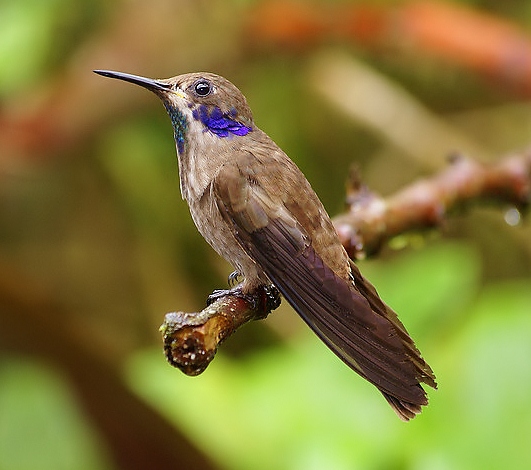 |
| Photo by Dusan Brinkhuizen (Sapayoa) |
Common name:
brown violet-ear (en); beija-flor-castanho (pt); colibri de Delphine (fr); colibrí pardo (es); brauner veilchenohrkolibri (de)
Taxonomy:
Order Apodiformes
Family Trochilidae
Range:
This species is found in the mountains of Central America and western and northern South America, from Guatemala to Colombia and then south along the Andes to Bolivia, and east to Venezuela, the Guyanas and northern Brazil. There are also isolated populations in Trinidad and Tobago and in the Brazilian state of Bahía.
Size:
These birds are 11,5-12,5 cm long and have a wingspan of 15 cm. They weigh 6,5-7 g.
Habitat:
The brown violet-ear is mostly found in the canopy of rainforests but may also be found in second growth areas and coffee plantations. They are found at altitudes of 100-2.800 m.
Diet:
They mainly feed on the nectar of various trees and epiphytes, but will also take insects and spiders.
Breeding:
The brown violet-ear is polygamous, with the males gathering in leks to attract females and having no further part in the breeding process after the copulation. After mating, the female builds a cup-shaped nest made of soft plant down other fibres, held together with spider webs. The nest is placed in a scrub or tree, typically 1-4 m above the ground. There she lays 2 white eggs, which she incubates alone. There is no information about the length of the incubation period, but the chicks, who the female feeds alone, fledge 9-14 days after hatching.
Conservation:
IUCN status – LC (Least Concern)
This species has a very large breeding range and is described as common and patchily distributed. The population is suspected to be declining do to ongoing habitat loss.







